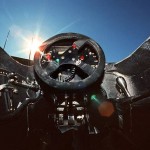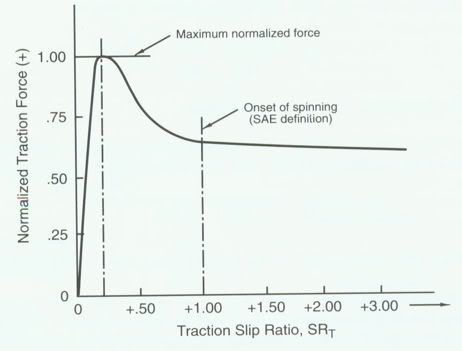F1 2012 questions
- This topic has 19 replies, 5 voices, and was last updated 11 years, 6 months ago by
raymondu999.
- AuthorPosts
- 16th October 2012, 12:50 at 12:50 pm #132235
 the_sigmanParticipant
the_sigmanParticipantLet’s write here our questions about F1 2012.
My question is:
Does anybody know when I should use front, rear and neutral brake bias?16th October 2012, 15:34 at 3:34 pm #212796raymondu999
ParticipantIt really depends on your driving style. If your car is frying its rear tyres, then shifting the bias forwards can help avoid rear locking. or if the fronts are getting killed, shifting it rearwards will help with front locking.
If you’re braking so hard that you’re overheating one end of the brakes, that means you’re not using your car’s full potential properly. I can tend to overheat the front brakes at times, and I use rear bias to help mitigate this.
16th October 2012, 16:07 at 4:07 pm #212797 the_sigmanParticipant
the_sigmanParticipantThanks @raymondu999!
16th October 2012, 19:35 at 7:35 pm #212798bag0
Participant@sigman1988
I usually use neutral and rear. If you shift the bias either to the front or to the rear the breaking distance grows, but at the same time with rear bias you can turn more under braking, of course doing so you can loose traction.
It is very helpful if you have to use the accelerator and the brake pedal at the same time (Silverstone:Abbey, Copse), or you have to turn mutch under braking (Suzuka: T1-2 Spoon, Korea: the whole track apart from T2-3, Valencia: T1-2)
16th October 2012, 21:32 at 9:32 pm #212799 graham228221Participant
graham228221Participantaccelerator and brake at the same time? that doesn’t sound right :)
as mentioned, i put the brakes towards the rear for trail braking (where you’re braking during or after turn in). for slow tight corners and hairpins, front bias should help the car slow down quicker as the weight transfers to the front. i tend to switch the brakes to neutral during fast/medium corners.
it all depends on your driving style, of course, and i find simple trial and error is the only to find out really!
for canada, where i just finished a career race, i found in qualifying my fast times were with rear bias right the way through the lap until the hairpin where i set it forward. then back to neutral for the final chicane, then back to rear bias for the next lap. the brake settings were 49-51. in contrast, in Spain i set it to 48-52 and only used front and neutral bias.
17th October 2012, 4:33 at 4:33 am #212800raymondu999
Participant@graham228221 I don’t know about in game as I haven’t really experimented much with the brake setup options, but in real life you’d want a neutral, or even forward bias for trail braking. As the weight transfers over the front axle under braking, the rear obviously has less weight, and a rearward brake bias means you’re likely to lock the rears. If you can help it, you never want to lock one axle before the other – in an ideal world if you can set both front and rear at such a fashion that they lock together then that would be the best.
I trail brake massively in the game – right up to the apex – and I use neutral the whole time.
17th October 2012, 7:03 at 7:03 am #212801raymondu999
ParticipantHow much the game emulates real-life vehicle dynamics, I cannot say. Frankly speaking there are some setup options where (going by what they describe each option to be) they actually have things the wrong way around, and a setup change in f1 2012 sometimes has the opposite effect of real life.
Strictly speaking, from an engineering standpoint, you want a neutral brake balance (which isn’t the same as a neutral, 50-50 brake bias)
You want the car to be on the limit of all four tyres, and as such, you want the brake bias to be equal to the ratio of front to rear grip. This is true for cornering grip too – understeer and oversteer means you will be, at any point in time, driving below the limit on one axle.
Of course some drivers feel more comfortable doing things a certain way, which can take precedence over engineering sense – a driver comfortable with his theoretically slower setup can be faster than a driver who is driving a car with the theoretical best, but he doesn’t feel at one with the car. It’s like trying to cross your arms the opposite way – you have to think about it rather than just being able to do it instinctively on command)
17th October 2012, 8:02 at 8:02 am #212802 graham228221Participant
graham228221Participant@raymondu999 I always thought that rear bias would help if you’re braking on turn in, because the front tyres would bite more from not being slowed down as much. Weight transfering to the front is a given whenever you’re braking, but if you’re relying on your front tyres to get you into the corner at speed then wouldn’t you want them to have maximum rotation?
The last thing you’d want while trail braking is your front tyres locking, because you’d just carry your momentum forward in a straight line – there would be no way to corner if your front tyres break traction. Besides, trail braking is generally only needed on faster corners, at least the way I drive – like turn 1 at Suzuka or turn 13/14 at Malaysia – and tyres simply won’t lock at high speeds, so rear locking wouldn’t be a problem.
I can’t find many online sources for this, but I’m pretty sure this is how brake bias works.
I know what you mean about just feeling comfortable about set up – I’m sure a lot of it is psychological, and it’s all about getting into a rhythm (particularly as they’ve got rid of tyre wear scaling, as you’ll be driving 10+ lap plus stints – which I think is a great thing btw). I also find it is almost like the game will tell you if you brake bias is wrong through certain corners, by spinning the car out. It feels a bit scripted sometimes, but not sure why that is – good example is the fast turns 5 and 6 in Sepang, I’ll always spin out if I accidentally leave my brake bias forward.
I drive using the official MS Xbox wheel btw, so I’m not sure if things are different if you’re using a pad or different wheels.
17th October 2012, 8:17 at 8:17 am #212803raymondu999
Participant@graham228221 With any brake bias, locking up is never good, because a wheel that is still rotating slows you down quicker.
I know where you’re coming from on the trail braking and rear bias. However, with trail braking, weight is shifted forward and off the rear axle. The front axle immediately has more grip than the rear. To avoid locking the brakes, with a rearward bias, you have to brake as hard as the rear (at that reduced grip) can take, and you won’t be using the front at full force. With trail braking and a rearward brake bias the front tyres still want to turn while the rears are being overwhelmed by trying to brake more (thanks to the bias being more rearward) at reduced grip.
The rear bias might sound correct intuitively – because then you have more front grip for turning. But it’s actually (somewhat counterintuitively) slower.
17th October 2012, 8:32 at 8:32 am #212804snakebite
MemberI haven’t played F1 2012 nearly enough to answer the original question. But I have some different views on the basic theory compared to some earlier replys.
First of all a rotating wheel doesn’t actually slow you down quicker. A rotating wheels enables you to control the vehicle.
About trail braking I believe rear bias is better. Because it is easier to lock your front tires when turning in you would have to ease off the brake. That would mean the rear brakes are not at their limit anymore when using front bias. Rear bias would better allow braking on the limit while turning in. At least that makes sense to me.
17th October 2012, 9:25 at 9:25 am #212805raymondu999
Participant@snakebite it makes sense on thesurface, but you’re ignoring that the front has more grip than the rear, under trail braking.
Also as a one-time tyre engineer I call BS on you saying the rotating tyre doesn’t slow the car further.
Scientifically speaking, whenever a car is accelerating (in whatever direction – remember acceleration is a vector quantity) the tyre is never fully “gripping” the road. There is always, at an almost microscopic level, a level of slip. When talking about forwards/backwards (along the tyre’s rotational axis) then we talk of slip ratio, and when talking about cornering and lateral acceleration, then we talk of slip angles.
You can disregard the numbers here as different tyres have different numbers, but what you need to pay attention to here is the general shape of the curve.

This is a graph which plots slip ratio, against the traction force – ie the further to the right, that means a greater difference between road speed and the tyre’s rotational speed. If a car has its tyres at 0 rotational – ie a locked tyre – then the slip ratio is at its greatest (car speed vs 0kph)
Because each tyre is basically slipping at every accelerative force that goes through it, there is actually no thing as “grip” in the everyday conversational sense. There is always some slide in the car. Each amount of slide, however, brings along a different level of grip. As with the graph (which is from FSAE) the tyres hit an optimum “sweet spot” at a certain slip ratio, before there is less grip on either side of it. A locked tyre, which will tend towards the far right end of the graph – will have severely reduced grip.
Back to the trail braking debate, all of this is a transient condition, and it’s over so quickly that the driver being comfortable with the setup under braking will probably gain more time than the theoretical loss of a slightly worse off brake bias.
17th October 2012, 9:54 at 9:54 am #212806bag0
Participantaccelerator and brake at the same time
Many drivers do it in cars with manual transmission, usually drifters. At a braking zone they pump up the RPM with a short burst, while braking and the clutch is open, so when they shift down the RPM is in the ideal interval. Search: Heal & toe breaking
In the game I use it in another way. In a highspeed corner, I push the accelerator fully, and if I have understeer, I push the brakes, just for a split second, to balance the car losing less speed than with lifting.
17th October 2012, 10:09 at 10:09 am #212807raymondu999
Participant@bag0 heel & toe is done with clutch full-in though… so you’re just accelerating the engine (not the car) while you’re doing it. It is possible to use it in the fashion you do – a tap on the brakes, to slow the car down quicker than a lift + brake (given the time taken for your foot to go off the gas) but ideally, it would be quicker to enter at the correct speed already and balance the speed on the throttle.
17th October 2012, 10:15 at 10:15 am #212808snakebite
Member@raymondu999 I’m not going to argue any further about braking with locked tyres vs rotating tyres, since you obviously have a better understanding of it. I have seen experiments of the same car stopping quicker without ABS, but after a brief google search I can see, that you were right.
As for the brake bias I am under the impression, that F1 cars generally have the brake bias forward and the simplified settings in the game would mean front – bias even more towards the front and rear – bias less towars the front. At least thats what I presumed when I said rear bias would be better for trail braking.
17th October 2012, 10:22 at 10:22 am #212809raymondu999
Participant@snakebite I do apologise for being so harsh. It was never my intention to be so rude, and I’ve slapped myself in the face for it.
ABS to be honest will not be on the limit. ABS doesn’t maintain the wheels from locking. What happens in the ABS world is that it’s programmed with a set slip ratio, as done by comparing the axle speed versus the speed of the car. Whenever the slip ratio goes above the optimum range – the peak of the graph I posted earlier – the car eases off on the brakes, and until it gets back to a predefined range, and then once it exits that range again it eases off again.
As such, ABS means you’re always braking at slightly less than maximum braking force. A really good driver who can keep the braking on the limit, at the optimum slip ratio (which is VERY difficult – imagine trying to balance the brake pedal on that knife edge of optimum slip ratio on ice) would always slow down quicker than an ABS-shod car brake.
At least that’s how it works in the real world – though I don’t know how it happens in the game. Again with the brake bias… I’m not entirely sure how the game handles that. The in-car setup screen with 50% front and rear sort of implies that 50% of the energy is going front, 50% going rear, but again – I don’t know how exactly they’ve implemented that in the game.
- AuthorPosts
- You must be logged in to reply to this topic.



